How to use a glue gun?

Today even children know in general terms how to use a glue gun, but the rules for working with this tool are not always followed. By heating a special compound, you can quickly connect different surfaces, and using various life hacks, you can also noticeably expand the area of what it can be used for. Detailed instructions describing step by step how to work correctly with a thermal gun with a glue stick will help you figure it out.
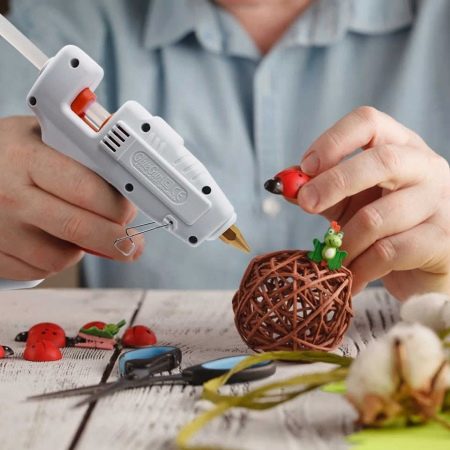
What can be glued?
Working with a heat gun is often compared to gluing materials using building compounds such as "liquid nails". But they have noticeable differences, because glue guns heat up the glue sticks, exerting a thermal effect on them, while "liquid nails" carry out a cold connection, ensuring fast curing of the composition.
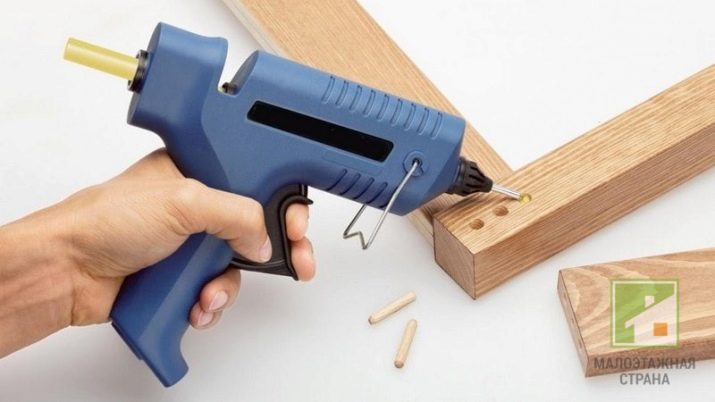
Using a conventional thermal gun at home, you can connect various objects. The adhesive in the rods has a non-toxic polyurethane, polyamide or EVA base with a melting point just above the boiling point of water. Accordingly, the materials for joining must withstand this temperature, and in some cases, more refractory consumable raw materials are used in everyday life, which changes their structure upon reaching +150 degrees Celsius.
The following materials can be glued with a thermal gun.
- Plastic... You can connect any kind of polyethylene, including reinforced, polypropylene and fiberglass. Plexiglass and its acrylic counterpart are well connected with such glue.

- Crafts for children. Natural materials are not afraid of contact with a thermal gun. At the same time, the craft turns out to be durable and neat.
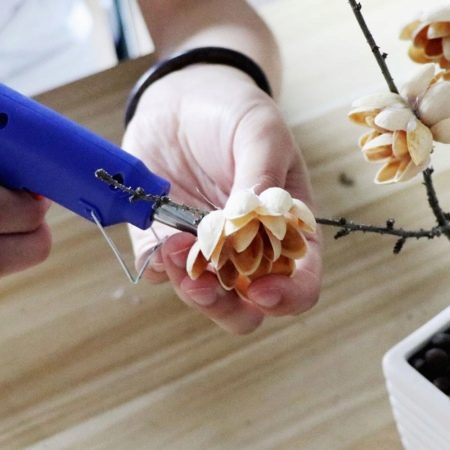
- Rhinestones on fabric... Hot melt glue is an ideal solution for any application, including the use of beads, other jewelry, felt. It does not change the color of the fabric, holds the elements firmly. It is not surprising that it is used in many needlework techniques: from kanzashi to handicrafts made from matting, straw, and cords.
For needlework, it is better to choose a model with a narrow nozzle-needle.

- Textile... The seams on jackets, bags, and other products made of artificial or natural leather are successfully glued with a thermal gun. It is suitable for working with almost all types of fabrics, except for very light synthetic ones, which do not tolerate high-temperature heating.

- Wood... With the help of a glue gun, it is possible to connect not only solid bars, but also parts made of plywood, fiberboard, chipboard.
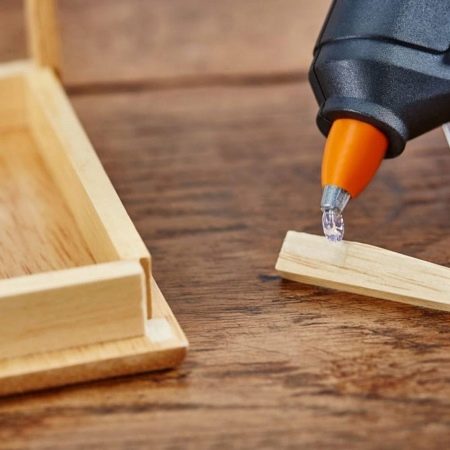
- Rubber... Can be used when sealing pads or repairing shoes.
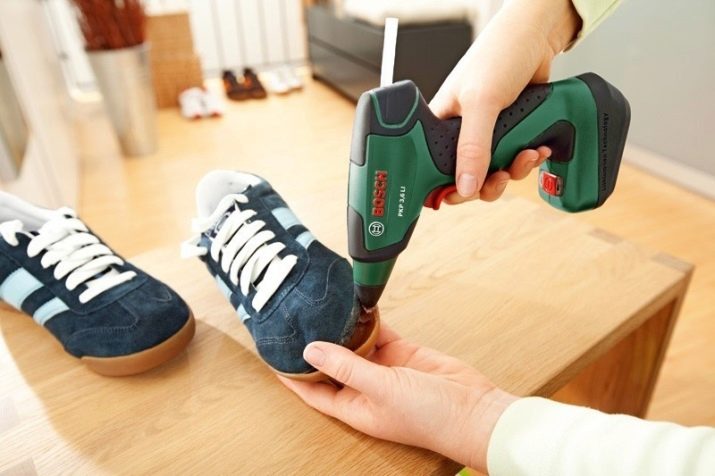
- Cork... The thermo gun helps to make coasters for hot plates, special boards for offices, and other products, providing sufficient strength and invisibility of the connection.
- Ceramics, glass and faience. In this case, the transparent structure of polyurethane hot melt glue will not only ensure the invisibility of the seam, but also make it possible to easily collect a broken vase from the fragments or restore the integrity of plumbing fixtures.

- Metal... A joint of this type requires careful cleaning of the surface from the oxide film. In addition, you will have to preheat the metal to set the glue. This is done with a construction hair dryer.
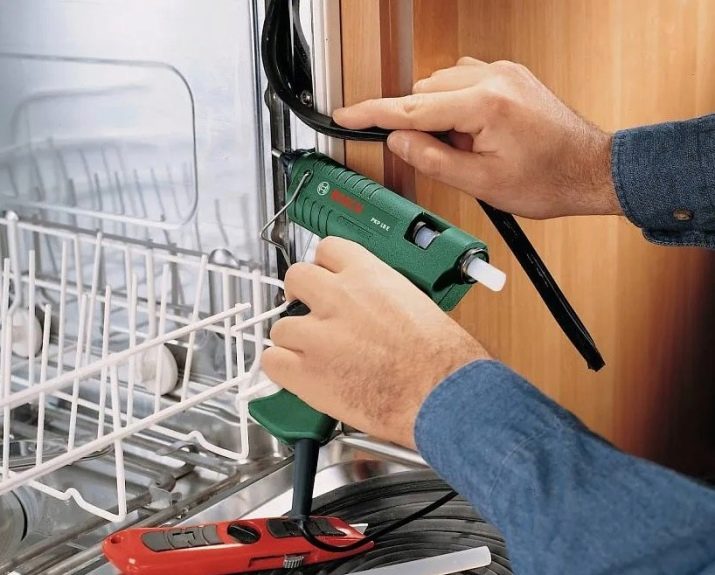
- Cardboard and paper... Here the thermo gun gives an important advantage when fixing materials with different densities and textures.
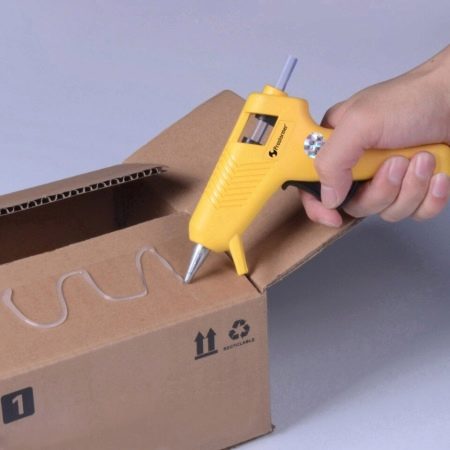
- Stone (natural minerals, ornamental or their imitation). This property of hot melt glue is used in the manufacture of jewelry, as well as in the creation of various crafts or wall cladding.
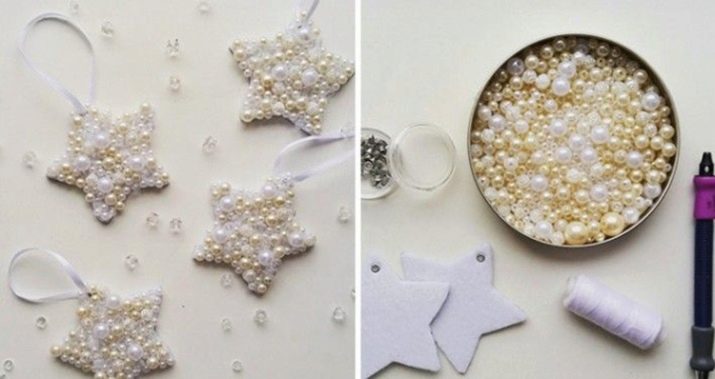
We can say that a glue gun is a versatile item that will definitely come in handy in the household and in everyday life. It is indispensable in the field of minor repairs, and modern needlewomen often use it in work on a variety of tasks: from simple to complex.
When used as a sealant, hot melt glue from a gun easily withstands operation in the open air, the seams are not afraid of increased loads, frost or sun.
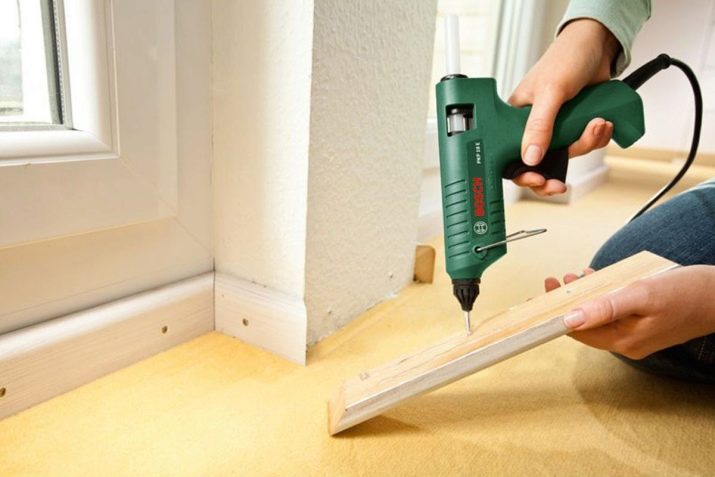
The list of materials to be joined is great. But there are combinations in which the glue gun will be useless. Polyurethane does not have high adhesion with mineral, gypsum or cement-based building mixtures, with silicone. Smooth paper with a glossy surface is also hot-bonded. If the objects to be fastened can heat up to temperatures above +105 degrees, you cannot use hot melt glue: it will simply melt.
How to work properly?
The thermal gun is a fairly easy-to-learn tool that can be used in a variety of household chores. But, despite the simple device, the rules for using an electrical device require certain safety measures. You can easily burn yourself with a hot tip, and it is better to handle the rod carefully. Heating equipment should not be used by children without adult supervision. Do not neglect the instruction itself: it is she who explains step by step how you can use the glue gun at home, in the garage or in the workshop.
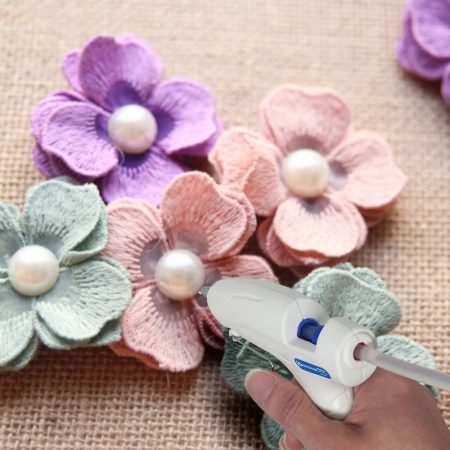
Refueling
The work of a thermal gun is impossible without consumables. That is why refueling is an important part of its use. A special adhesive composition for the tool is used in solid but flexible rods. When refueling, they are placed in a special hole at the end of the body.
It is important to pay attention to the fact that their diameter differs depending on the model - it is better to clarify the compatible parameters before buying.
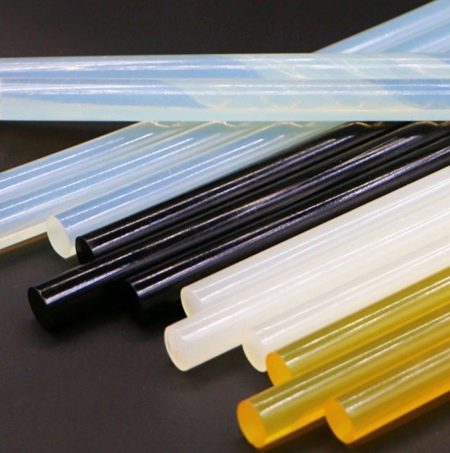
Refueling rules are pretty simple.
- Place one end of the glue stick in the hole provided for it.
- Slide it in until it stops. The rod must fit snugly in the body without falling out of it.
Foreign objects must not be placed in the adhesive cartridge. After use, consumables are removed, reuse is not allowed.
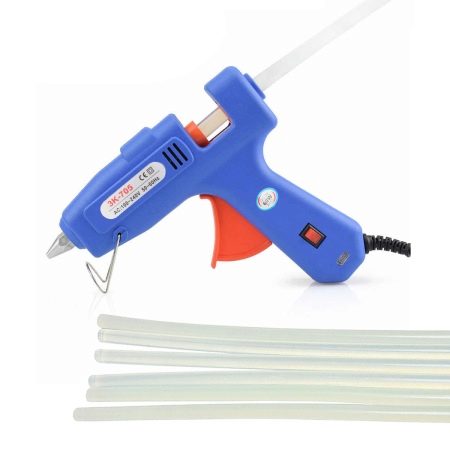
Instructions for use
There are quite clear regulations that determine the rules for using a glue gun. The basic procedure will be as described below.
- Preparation of the workplace... It is necessary to prepare the substrate in the form of a special silicone mat for soldering or a sheet of plywood or cardboard.

- Instrument preparation. Place the thermal gun on the work surface with the support-support with the tip forward and downward. It is important that the nozzle is above the protective backing, as glue can leak from the rods when the rods are heated. You should also make sure that the device is charged.
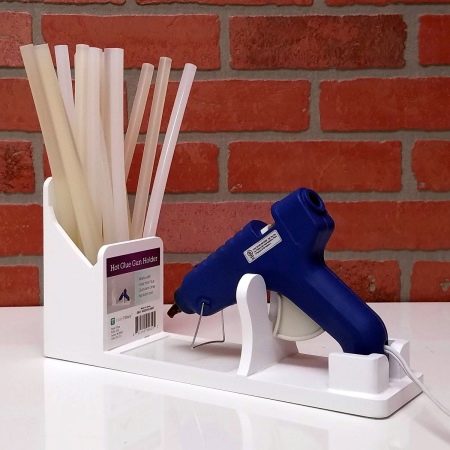
- Network connection. The plug of the power tool is inserted into an outlet. If there is a power button, it should be turned on. If such an element is not provided, heating will start immediately.

- Waiting for work to start. On average, a thermo gun spends 3 to 5 minutes on heating. During this period of time, pressure on the trigger should be avoided to avoid damaging the tool. It is possible to adjust the temperature during standby, if provided. The standard operating range is 170 to 200 degrees.
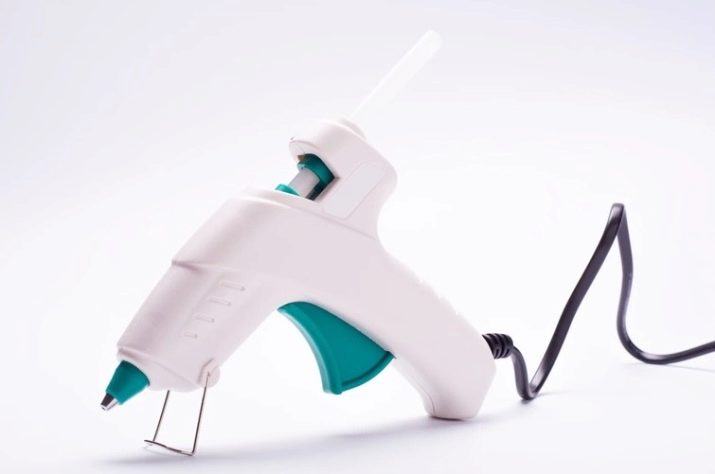
- Glue feed. To start working, it is enough to gently push the trigger of the tool. The stronger the pressure, the faster the mass will come out of the nozzle. It is worth considering that all surfaces to be connected must first be thoroughly degreased, cleaned of dirt, and then allowed to dry. After that, you can apply the adhesive to the joint area.
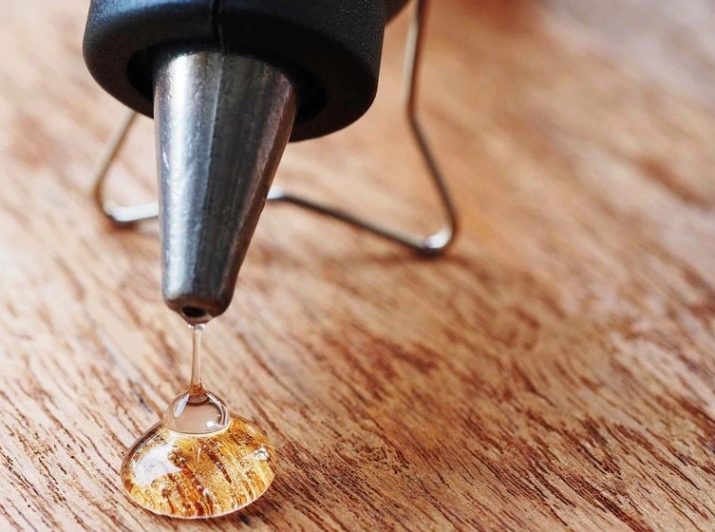
- Bonding parts. For their tight connection, the bonding area will have to be pressed. You can do this with a dense piece of matter. It is important to protect your hands from burns: the glue is very hot at this stage.
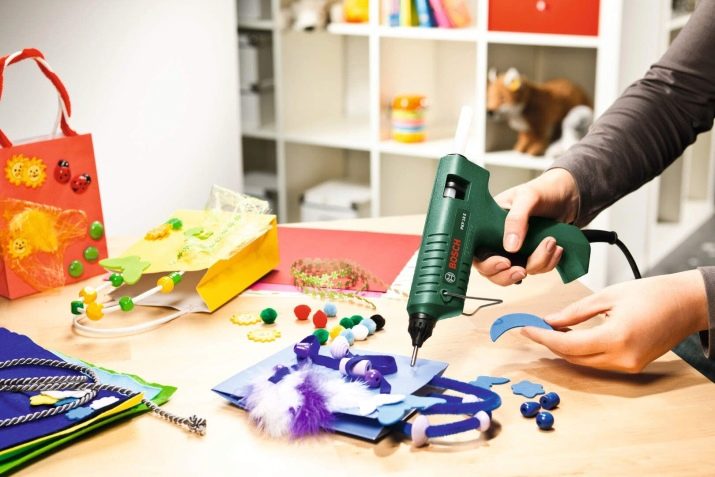
- Completion of work. After disconnecting from the mains, the thermo gun should remain on the surface protected from glue drops for about 10 minutes (until it cools completely). At this time, it is placed on a stand. After that, the device can be removed for storage, and the workplace can be cleaned of the remains of consumables.
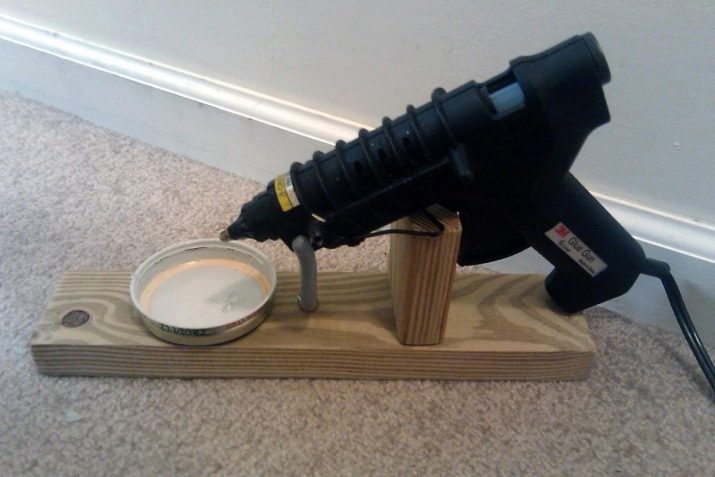
In the process of working with a thermal gun, it may require additional refueling of the rods.
If the glue mass, when pressing the trigger, no longer comes out of the nozzle, it is worth installing a new rod and then continuing to work.
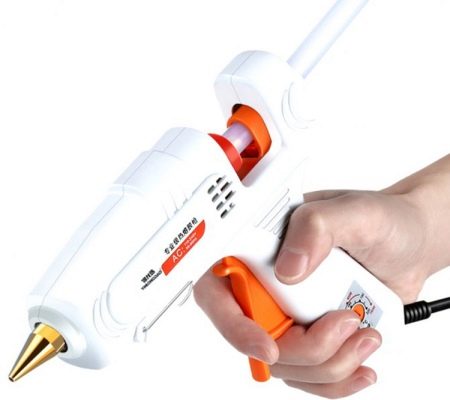
How to clean?
Among the rules for operating a thermo gun, there are requirements for its regular and thorough cleaning. It is necessary for both expensive and budget models. When using quality branded refills, cleaning will be less frequent, but this does not eliminate the need to remove excess glue from the surface of the nozzle. It is not necessary to remove them inside, self-cleaning occurs when the composition is heated.
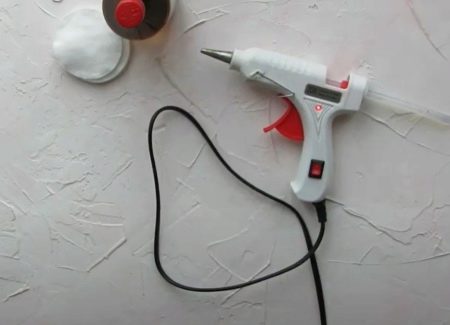
If the hot melt glue is on the tool body, remove it using aluminum foil and a soldering iron. In this case, the device must be disconnected from the network. After warming up the soldering iron, it is applied through the foil to the contaminated area. The melted glue will stick to the metal, easily releasing the case. Surface cleaning can also be done with ethyl alcohol or acetone. They moisten a cloth or paper napkin in them, and then process the body of the glue gun.
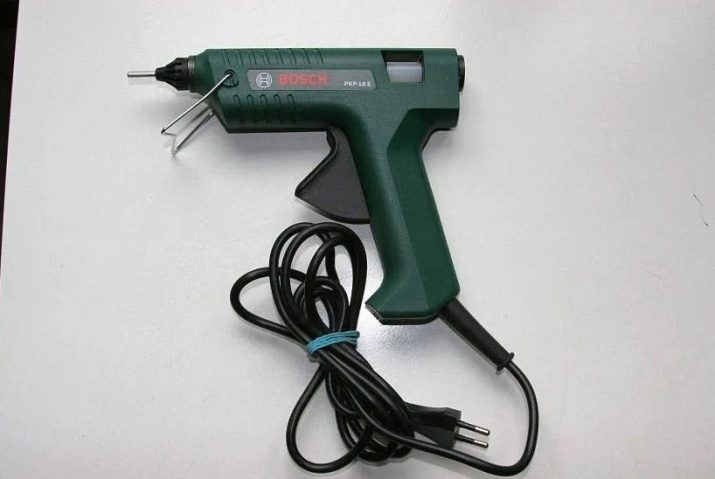
Security measures
Basic security measures are also as simple as possible. Before using the tool, remove long hair and put on protective gloves. Pets and small children are isolated while working with heating devices. The room needs to provide access to fresh air.
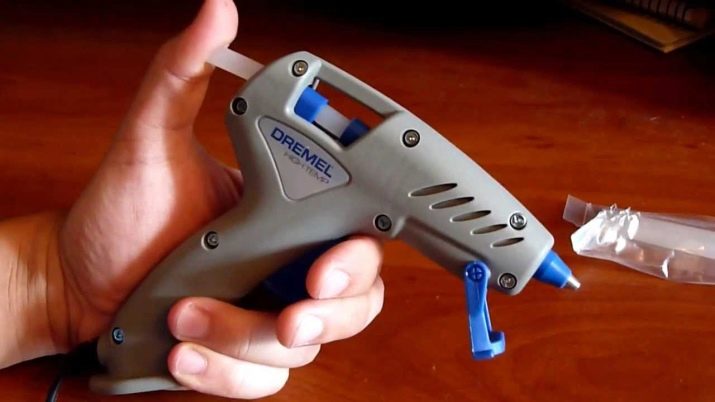
Most of the glue guns on sale have a ceramic heating element and are connected to the power supply.In this case, the main safety measures will be associated specifically with protection against electric shock. Let's find out what not to do.
- Use a device with damaged wire insulation.
- Use a thermo gun in damp rooms: a damp floor can become a conductor of electricity.
- Overheat the device, exceed the recommended duration of its continuous operation.
- Touch metal parts of the housing with wet hands.
- Disassemble the thermal gun without first disconnecting it from the network.
- Leave the appliance unattended.
- Lay the heated appliance on its side. It must be pre-cooled in an upright position by slightly tilting the nozzle.
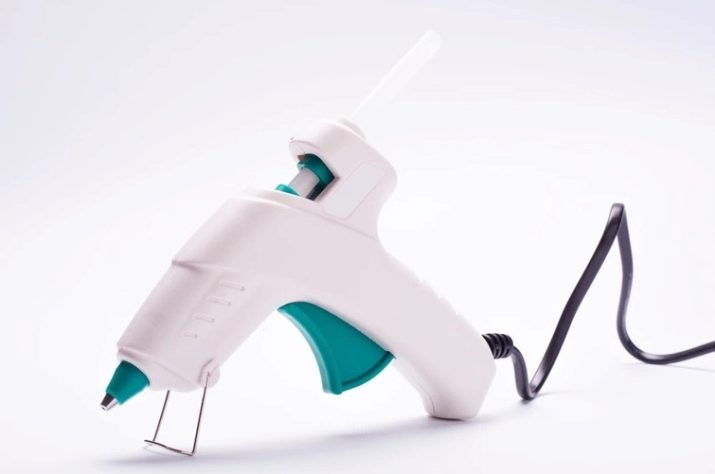
Gas glue guns are less common. They are designed for work outdoors, in humid environments and in conditions where there is no access to power supply.
When working with such a tool, you need to stay away from sources of open fire, ensure an adequate supply of oxygen.
Do not forget that the nozzle of the thermal gun, made of metal, heats up to +200 degrees. It is strictly forbidden to touch it without protective gloves during operation. When choosing clothes, you should give preference to durable, tight-fitting suits with tight cuffs.
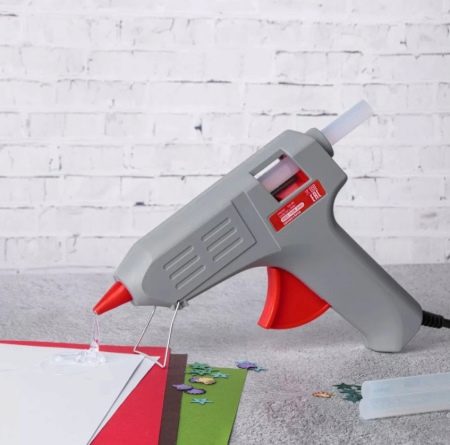
Life hacks
When using a heat gun, it is important to carefully monitor the heating temperature of the glue. If it is too high, "threads" will appear - a sign that the composition in the rods has boiled inside the tank. Reducing heating will help fix the problem. Also among the useful life hacks are the following.
- Adjusting the trigger travel... If provided, it will be easier to dose the volumes of adhesive. To weaken or enhance the smoothness of the movement, it is enough to tighten the screw.
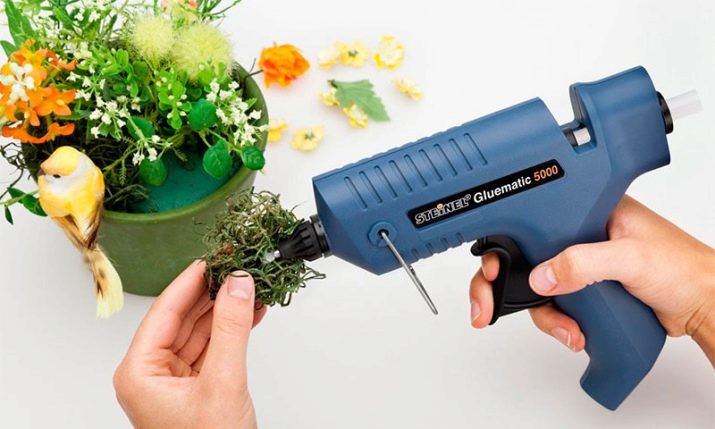
- Tips for gluing ceramics... In this case, the surface will first have to be sanded, removing a thin layer of glaze. Then the dust is removed, the surface is covered with glue.
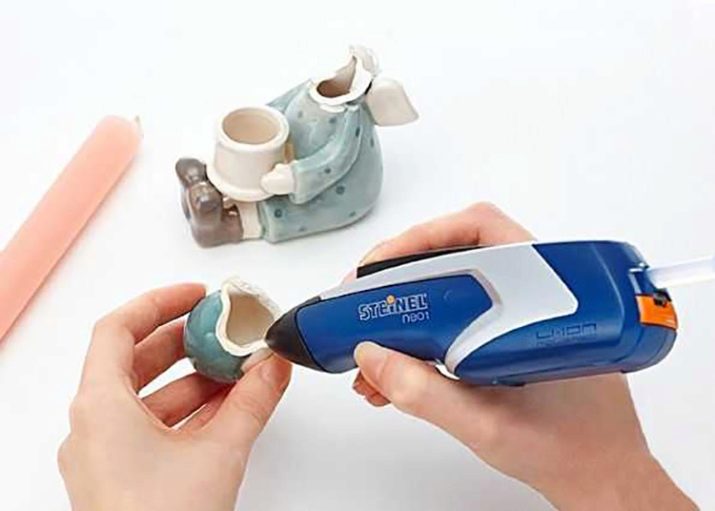
- Correct choice of bar color... When buying, it is worth considering that only a transparent version of the glue is considered universal. Black and gray rods are used for sealing and insulation and have a higher melting point. White matte glue connects glass and metal, yellow transparent glue is focused on working with wood, cardboard and paper.
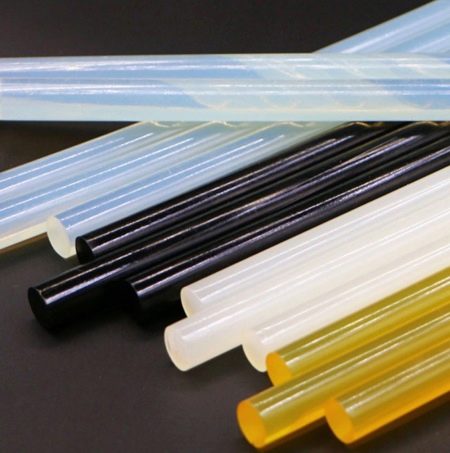
- Dismantling the old connection. If hot glue was used for sealing or when laying linoleum, fixing ceramic tiles, you simply cannot tear it off.
You will have to pre-heat the surface with a construction hairdryer, and then carefully separate the components of the connection.
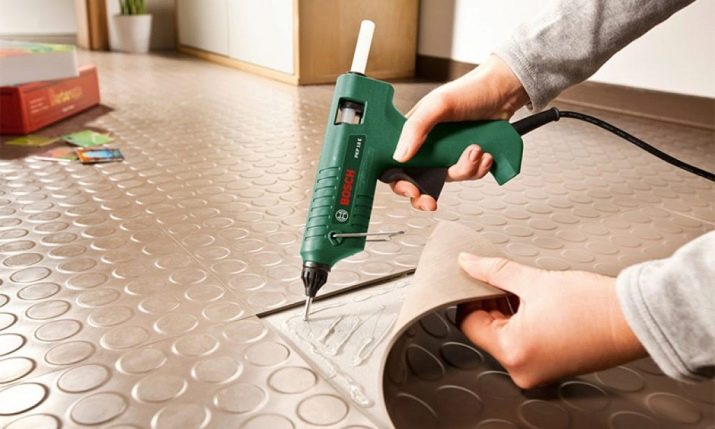
- Use of rods without a heat gun. They can be heated with a candle or other heat source by attaching an aluminum ballpoint pen or metal tube to the body. Pliers or clamps are used as a holder, portions of glue are separated with an awl or flat blade of a screwdriver. But the quality of the connection in this case will be lower.
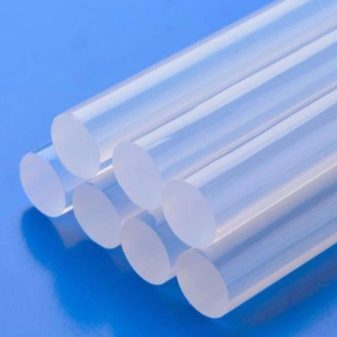

- Visible seam... When gluing some materials, the joining area cannot be hidden, it remains visible, and can reduce the artistic value of the product. In this case, the most rational solution would be to purchase colored or glitter rods that have the desired shade, and sometimes glitter decor. In this case, the glue seam will become a detail of the decoration, and not an annoying mistake in the work of the master.

- Removing the rod when replacing. This can be done fairly easily when cold. It is much more difficult to extract a hot rod, part of which has already been melted. It must be firmly gripped with your fingers, turned clockwise twice, and then pulled out of the heating chamber. The remaining glue is then allowed to drain from the spout, after which a replaceable element of the desired type or color is installed.
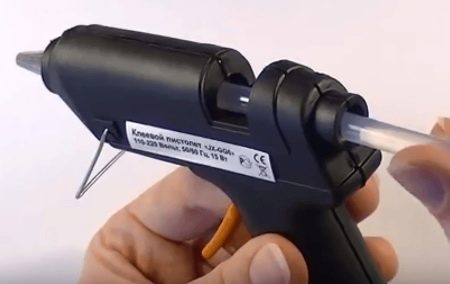
- Connecting homogeneous rods... It can be done if the base material is the same.In this case, the new rod is covered from the end with a drop of glue from the nozzle, and then it is placed into the chamber with the shank of the old one remaining in it. By pressing the elements, you can refuel without removing the remains of consumables from the body of the thermal gun.
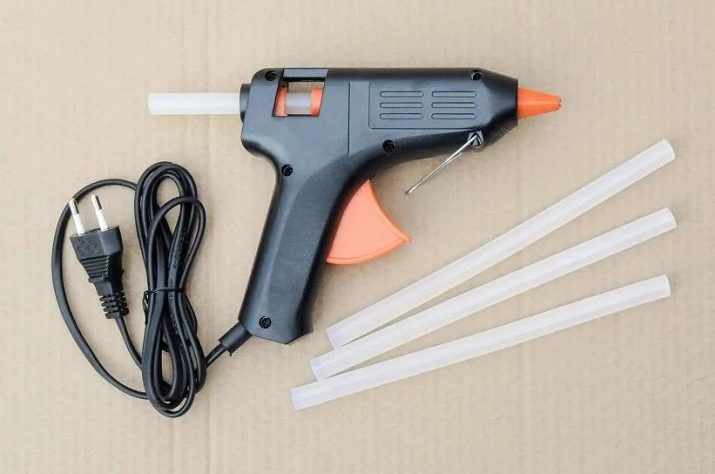
- Non-standard use... You can use a drop or a piece of a rod like a regular eraser. A life hack is suitable if the eraser is not at hand.
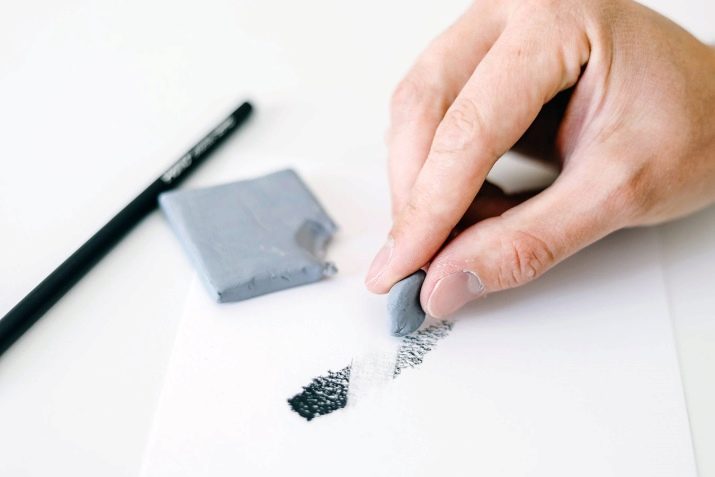

Detailed instructions on how to use the glue gun can be found in the following video.








